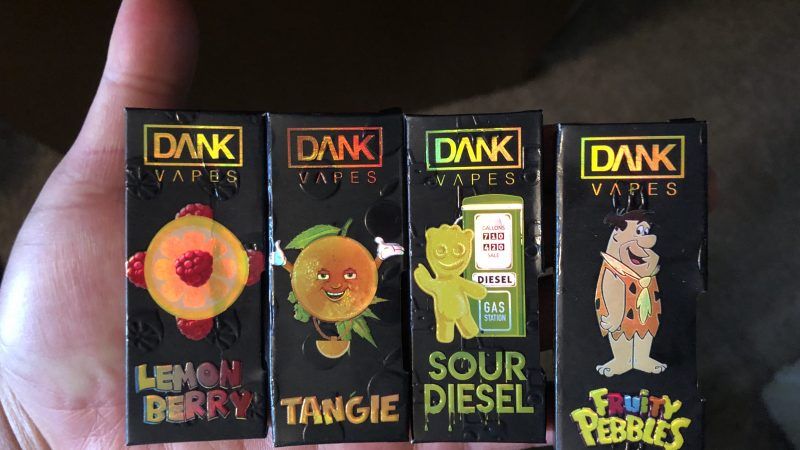CDC Confirms That the Vast Majority of Vaping-Related Lung Disease Cases Involve THC Products
The latest findings highlight the irrationality of banning legal e-cigarettes that deliver nicotine.

Today the U.S. Centers for Disease Control and Prevention (CDC) finally confirmed that the vast majority of patients with vaping-related respiratory illnesses have reported using cannabis products, typically purchased on the black market. Among 514 patients for whom the information was available, the CDC found, 77 percent reported using THC products. Just 16 percent said they had vaped only nicotine, although the types, sources, and brands of the products were not identified.
Since people may be reluctant to admit illegal drug use, the true rate of THC vaping among the patients with respiratory symptoms is almost certainly higher. Prior data from several states indicated that 83 percent to 100 percent of patients reported that they had vaped THC.
Another CDC study, based on interviews with 86 patients in Wisconsin and Illinois, found that 87 percent "reported using e-cigarette products containing THC." Two-thirds of the THC vapers said they used cartridges "sold under the brand name Dank Vapes," one of several "largely counterfeit brands with common packaging that is easily available online and that is used by distributors to market THC-containing cartridges with no obvious centralized production or distribution."
In light of this information, the main thrust of which has been apparent for at least a month, it is harder than ever to justify the insinuation that legal e-cigarettes are to blame for the lung disease outbreak, which involves 805 cases and 12 deaths by the CDC's latest count. While 16 percent of the patients in the CDC's study of 514 cases said they vaped only nicotine, those self-reports may not be reliable given the sensitivity of the subject. In any case, there is no indication so far that any of the patients were using legal e-cigarettes, as opposed to black-market pods or e-liquids, which may pose special hazards.
The CDC's findings make sense, since legal e-cigarettes have been used by millions of Americans for years without reports of lung illnesses like these. The cases emerged only in recent months, which suggests that the problem is relatively new additives or contaminants in THC vapes, and possibly also in counterfeit nicotine pods or nicotine e-liquids of unknown provenance.
"It seems there's too much conflating these tragic lung injuries with store-bought brands of regulated, legal e-cigs like Juul and NJOY," former Food and Drug Administration Commissioner Scott Gottlieb observed yesterday, "and far too little blaming THC, CBD, and bootleg nicotine vapes—where so far, the only available hard evidence points." While "some people may be getting sick from legal e-cigs," he said, "to save lives and make sound policy we must follow science."
The CDC has slightly revised its muddled message about the hazards of vaping. "While this investigation is ongoing," it says, "CDC recommends that you consider refraining from using e-cigarette, or vaping, products, particularly those containing THC" (emphasis added). That last part is new. The CDC also implicitly acknowledges that conventional, combustible cigarettes are more dangerous than e-cigarettes: "If you are an adult who used e-cigarettes containing nicotine to quit cigarette smoking, do not return to smoking cigarettes."
Meanwhile, however, Massachusetts has banned all vaping products, leaving former and current smokers without this harm-reducing alternative. Earlier this month, Michigan and New York imposed "emergency" bans on the flavored e-cigarettes that former smokers overwhelmingly prefer. This week Rhode Island announced a similar ban, and today Washington state followed suit.
Rhode Island Gov. Gina Raimondo (D) and Washington Gov. Jay Inslee (D) both cited the lung disease outbreak, along with recent increases in underage vaping, as part of their justification, even though the bans they plan to impose will not apply to the products that seem to be the main culprits. All of these bans are being imposed by unilateral executive action, without any input from state legislatures.
These panicky prohibitions create a situation where former smokers may go back to a far more hazardous source of nicotine and current smokers may be deterred from quitting by the lack of appealing alternatives. The bans also give a boost to the very black-market products that have been implicated in vaping-related respiratory illnesses. The predictable result will be more diseases and deaths, which the governors presumably do not intend.

Show Comments (67)